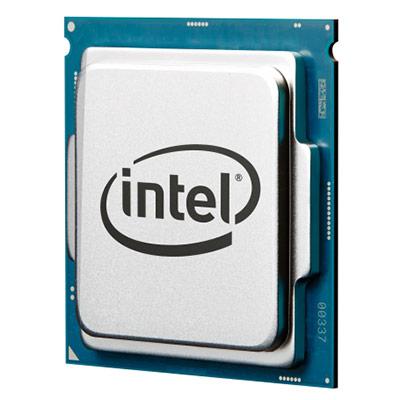Intel's New Chip-Level Security Tech Uses GPU Power, Machine Learning To Detect Threats

Intel lifted the curtain Monday on the company's first hardware-level security features to protect against sophisticated cyberattacks, and they already have buy-in from two major players.
Unveiled at the 2018 RSA Conference, the Santa Clara, Calif.-based company's Intel Threat Detection Technology is a new brand for a set of silicon-level security capabilities while Intel Security Essentials is a new framework that aims to standardize built-in security features for the company's processors.
The news comes after Intel has been working to ensure customers and partners that it takes security seriously following the January disclosure of the Meltdown and Spectre side-channel vulnerabilities that had a larger impact on Intel than its competitors. Brian Krzanich, the company's CEO, has promised hardware-level security in Intel's CPUs while the company established a new Product Assurance and Security group to take a more proactive approach against threats.
The most notable feature from Intel's RSA announcement was Advanced Memory Scanning, one of the first two Threat Detection Technology capabilities, which will allow virus scanners to use Intel's integrated graphics processor to reduce CPU usage and improve battery life. The company said initial tests indicate this capability can reduce CPU utilization from 20 percent to as little as 2 percent.
Microsoft has already integrated Accelerated Memory Scanning into its Windows Defender Advanced Threat Protection software, which is available now.
The second Intel Threat Detection Technology is called Advanced Platform Telemetry, which uses machine-learning algorithms to better detect advanced threats on corporate networks while mitigating any hits to performance and reducing false positives. The company said Cisco will integrate the technology into its Tetration data center security software.
Intel said several other partners will be making announcements at RSA this week.
The company didn't provide many details for Intel Security Essentials but said the new framework will "ensure a consistent set of critical root-of-trust hardware security capabilities" across Intel Core, Xeon and Atom processors. These capabilities, which include secure boot, accelerated cryptography and trusted execution enclaves for protecting software at runtime, are "designed to improve the security posture of computing, lower the cost of deploying security solutions and minimize the impact of security on performance," the company wrote in a blog post.
Randy Copeland, president and CEO of Velocity Micro, a Richmond, Va.-based systems builder and Intel partner, told CRN that while there have been no instances of the Meltdown and Spectre vulnerabilities being exploited so far, it's a good step for customers who worry about the possibility.
"I think if it helps people feel more secure, that's great. And I also give kudos to Intel for such a novel approach by using integrated GPU processing," he said in an email. "If Intel can reduce the perception of side-channel vulnerabilities and other potential malicious attacks as real threats, it will only help our business."
As part of Intel's Monday announcement, the company also said it is working with Purdue University for a new Design for Security Badge Program, which aims to boost cybersecurity talent.
Leslie Culbertson, the head of Intel's Product Assurance and Security group, previously said collaboration between tech companies and researchers is integral for building better protections in the future.
"We expect bad actors will continuously pursue increasingly sophisticated attacks, and it will take all of us – working together – to deliver solutions," she said.